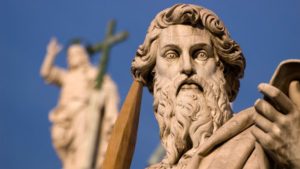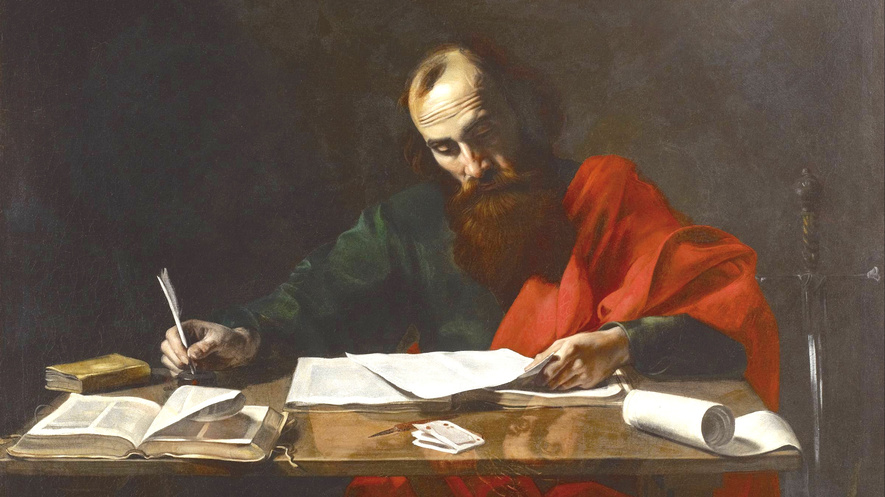Paul the Apostle, commonly known as Saint Paul, was an apostle, though not one of the Twelve Apostles, who taught the gospel of the Christ to the first century world. Paul is generally considered one of the most important figures of the Apostolic Age and in the mid-30s to the mid-50s AD he founded several churches in Asia Minor and Europe. Take a look below for 30 more interesting and fun facts about Paul the Apostle.
1. Paul took advantage of his statue as both a Jew and a Roman citizen to minister to both Jewish and Roman audiences.
2. According to writings in the New Testament and prior to his conversion, Paul was dedicated to persecuting the early disciples of Jesus in the area of Jerusalem.
3. In the narrative of the Acts of the Apostles, Paul was traveling on the road from Jerusalem to Damascus on a mission to, “arrest them and bring them back to Jerusalem”, when the resurrected Jesus appeared to him in a great light.
4. Thirteen of the twenty seven books in the New Testament have been attributed to Paul.
5. Today, Paul’s epistles continue to be vital roots of the theology, worship and pastoral life in the Catholic and Protestant traditions of the West, as well as the Orthodox traditions of the East.

6. Paul’s influence on Christian thought and practice has been characterized as being as, “profound as it is pervasive,” among that of many other apostles and missionaries involved in the spread of the Christian faith.
7. Augustine of Hippo developed Paul’s idea that salvation is based on faith and not “works of the law.”
8. Martin Luther’s interpretation of Paul’s writings influence Luther’s doctrine of sola fide.
9. There are seven relatives of Paul mentioned in the New Testament. They are Andronicus, Junia, Jason, Sosipater and Lucius. There was also mention of his sister and his nephew, who helped him in prison.
10. Paul was the most popular apostle in the early Church as he was effective in forming the Christian Community. He was educated in Jerusalem under the famous Jewish teacher called Gamaliel.
11. His original name was Saul, but after his conversion to Christianity, he changed his name to Paul which means “small.”

12. He never met Jesus during his brief years of ministry and he was also not one of the 12 apostles, but according to the New Testament, he did interact with many of the original disciples, especially in Jerusalem.
13. Paul was Jewish by birth and there were questions about his commitment to Judaism both before and after his conversion to Christianity.
14. The Jews plotted to kill him but Paul came to know of their plan. They watched the gates day and night, but the disciples took him by the night and got him through the wall in a large basket.
15. When Paul started preaching, Jewish followers of Jesus believed that he was a Messiah to his chosen people but Paul made a radical departure of preaching to non-Jews or Gentiles saying that through Jesus, God has extended salvation to the Gentiles.
16. He was from a devout Jewish family in the city of Tarsus, which was one of the biggest trade centers on the Mediterranean coast. It had been in existence for several hundred years prior to his birth.
17. Paul referred to himself as being, “of the stock of Israel, of the tribe of Benjamin, a Hebrew of the Hebrews; as touching the law, a Pharisee.”
18. In his letters, Paul drew heavily on his knowledge of Stoic philosophy, using Stoic terms and metaphors to assist his new Gentile converts in their understanding of the revealed word of God.

19. He owed much to his training in the law and the prophets, utilizing this knowledge to convince his Jewish countrymen of the unity of past Old Testament prophecy and covenants with the fulfilling of these in Jesus Christ.
20. Paul was critical both theologically and empirically of claims of moral or lineal superiority of Jews while conversely strongly sustaining the notion of a special place for the Children of Israel.
21. After his conversion, Paul went to Damascus, where Act 9 states that he was healed of his blindness and baptized by Ananias of Damascus.
22. Antioch served as a major Christian center for Paul’s evangelism, and he remained there for, “a long time with the disciples,” at the conclusion of his first journey.
23. The New Testament doesn’t say when or how Paul died. The date of Paul’s death is believed to have occurred after the Great Fire of Rome in July 64, but before the last year of Nero’s reign, in 68.
24. In 2002, an eight foot long marble sarcophagus, inscribed with the words “PAULO APOSTOLO MART” was discovered during excavations around the Basilica of Saint Paul outside the walls on the Via Ostiensis. Vatican archaeologists declared this to be the tomb of Paul the Apostle in 2005.
25. In Paul’s writings, he provides the first written account of what it is to be a Christian and thus a description of Christian spirituality.

26. Paul’s writings emphasized the crucifixion, Christ’s resurrection and the Parousia or second coming of Christ.
27. Paul taught that Christians are redeemed from sin by Jesus’ death and resurrection. His death was an expiation as well as a propitiation, and by Christ’s blood peace is made between God and man.
28. Paul expected that Christians who had died before Jesus returned would be resurrected to share in God’s kingdom, and he believed that the saved would be transformed, assuming supernatural bodies.
29. He declared that “Christ is the end of the law,” exalted the Christian church as the body of Christ, and depicted the world outside the Church as under judgment.
30. His writings include the earliest reference to the “Lord’s Supper,” a rite traditionally identified as the Christian communion of Eucharist.




